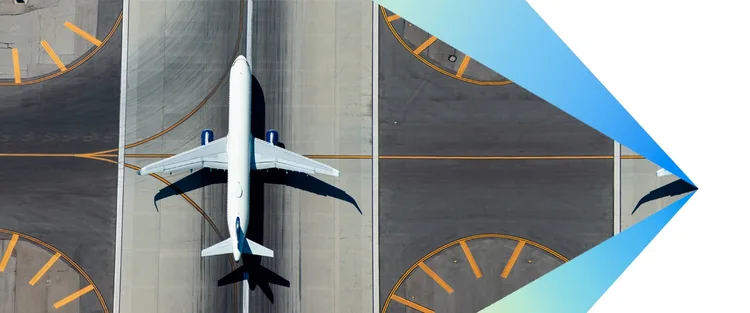<p><span class="medium"><br>May 4, 2023</span></p>
With planes, it’s a long way from autopilot to no pilot
<p><b>Self-flying passenger planes will likely stay grounded until every edge case can be accounted for.</b></p>
<h4>In the news</h4> <p>In the 1950s, <a href="https://robbreport.com/motors/aviation/autonomous-flight-moving-slowly-1234824261/" target="_blank" rel="noopener noreferrer">five professionals</a> were required to operate a commercial flight (a pair of pilots, a flight engineer, a radio specialist and a navigator). That was eventually trimmed down to today’s two-member crew. The question is whether the number of humans needed to pilot a passenger flight could ever be reduced to zero.</p> <p>The technology isn’t necessarily the holdup. Consider that autonomous flight is old hat for the military, albeit in controlled airspace. And already, existing small planes <a href="https://www.freightwaves.com/news/merlin-to-deliver-alaska-cargo-with-self-flying-aircraft" target="_blank" rel="noopener noreferrer">are being retrofitted</a> to fly on their own and deliver supplies to remote areas.</p> <p>Autopilot for civil flight is also nothing new; dating back to 1912, the tech is nearly as old as aviation itself. But there’s a vast difference between having a qualified, experienced, in-the-cockpit pro setting the plane on autopilot—and having it be done from the ground.</p> <p>In the US, the Federal Aviation Administration appears to be preparing for autonomous flight, and the world’s airlines are certainly champing at the bit; by <a href="https://www.forbes.com/sites/suzannerowankelleher/2023/02/26/pilotless-autonomous-self-flying-planes/?utm\_campaign=socialflowForbesMainLI\&utm\_medium=social\&utm\_source=ForbesMainLinkedIn\&sh=1c7c8b3b45ea" target="_blank" rel="noopener noreferrer">one estimate</a>, they stand to save $35 billion a year by going pilot-free.</p> <p>About the only folks who don’t seem to love the idea are pilots (whose interest is clear) and passengers, to some extent. In <a href="https://www.ipsos.com/en-us/news-polls/Few-Would-be-Comfortable-with-Flying-on-Pilotless-Airliners" target="_blank" rel="noopener noreferrer">a 2018 study</a>, 81% of Americans said they wouldn’t be comfortable with autonomous flight. However, just a year later, <a href="https://interestingengineering.com/innovation/will-autonomous-planes-get-flight-clearance" target="_blank" rel="noopener noreferrer">70% of consumers</a> said they’d be comfortable with flying in an autonomous plane in their lifetime.</p> <h4>The Cognizant take</h4> <p>In commercial passenger aviation, there’s zero tolerance for errors. For that reason, the road (or should we say flight?) to full automation will be a long and incremental one … and still may never fully eliminate the human.</p> <p>“When you’ve got 300 lives on a plane, it’s just too serious to give it to an algorithm,” says Dr. Shivanajay Marwaha, Techno-Business Advisory Leader in Cognizant's IoT Solutions Practice. Pointing to drones and autonomous military flight as prior incremental advances, he believes the next step may be cargo planes operated remotely by ground-based humans.</p> <p>Humans will remain critical components for the foreseeable future, agrees Tim Meyer, Director, EV & Fleet Electrification/Smart Connected Mobility in Cognizant’s IoT Solutions Practice. As with self-driving cars, he says, it’s the inevitable edge cases that non-human operators cannot yet handle. “Sure, planes can land themselves for the most part,” Meyer says, “but supervision is still needed. There are very few edge cases—but those cases are so extreme, so impossible to predict. That’s where the pilot comes in.”</p> <p>That doesn’t rule out evolutionary change. After all, some flight incidents are <i>caused</i> by human pilot error and could be mitigated by autonomous control. Moreover, Meyer draws a parallel with the recent ascension of generative artificial intelligence. Chatbots and other AI-dependent tools, he notes, evolved gradually for several years until enough data points were gathered to suddenly propel ChatGPT and similar software to the forefront. Before autonomous flight could make a similar leap, though, sufficient data on edge cases must be developed. And that’s a stiff challenge.</p> <p>Marwaha makes another comparison, likening commercial airline pilots to astronauts, whose mission has been heavily pre-planned and relies on ground support. But in addition to being passengers to some extent, “they’re also pilots when necessary.”</p> <p>While we can expect continued advances in the ability of planes to fly themselves, as long as there are edge cases, it seems humans will come in handy.</p>
<p>Understand the transformative impact of emerging technologies on the world around us as they address our most significant global challenges.</p> <p><a href="mailto:editorialboard@cognizant.com">editorialboard@cognizant.com</a></p>

